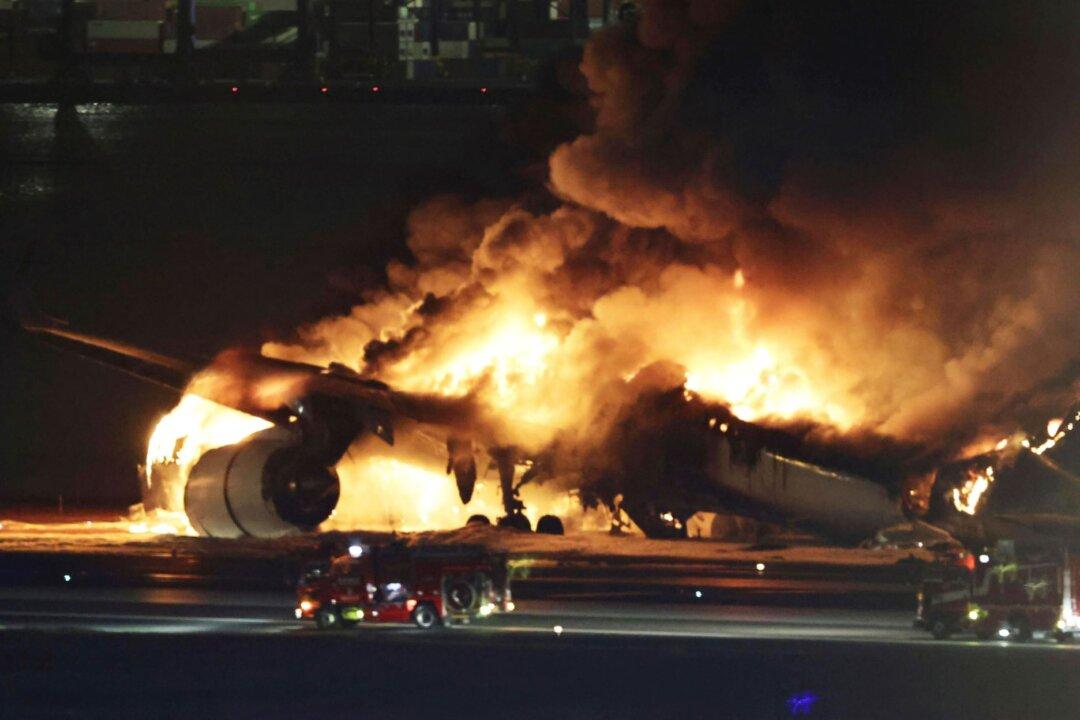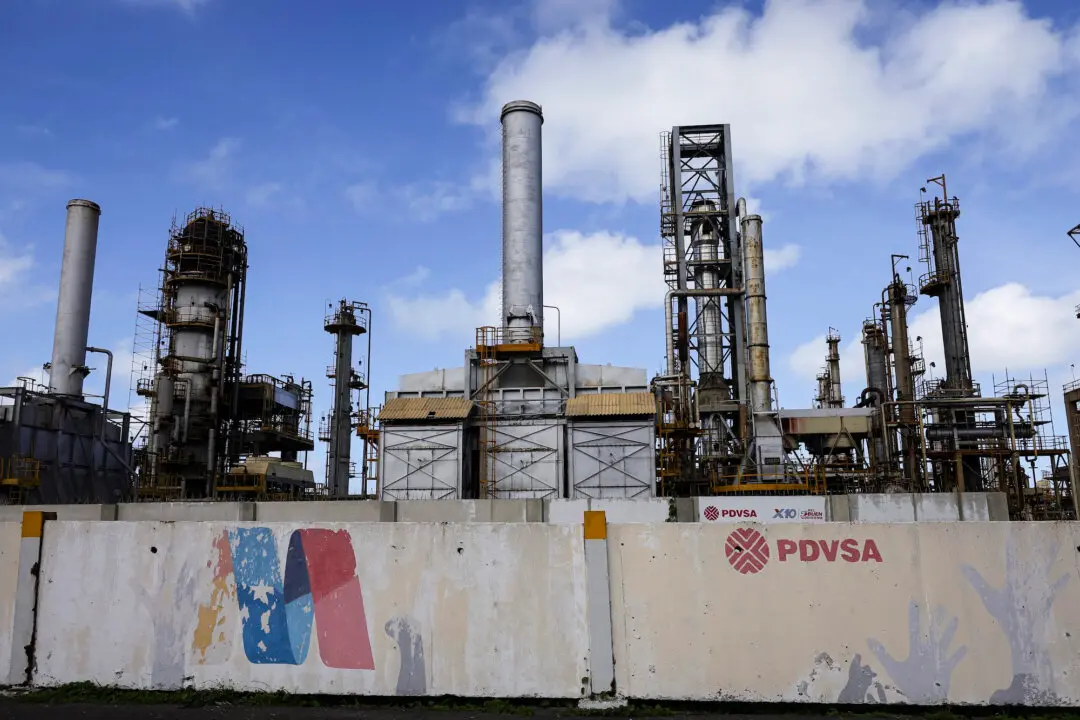A Japanese passenger plane with 379 occupants on board burst into flames Tuesday after colliding with a Coast Guard aircraft on the runway at Tokyo’s Haneda Airport, with video showing terrified passengers inside as the inferno raged outside their windows.
Transport Minister Tetsuo Saito told reporters on Jan. 2 that all passengers aboard Japan Airlines flight JAL-516 were safely evacuated before the plane was engulfed in flames.





